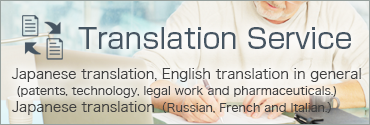September Guide Sign
Finally early autumn has come. The season of a good appetite.
All over Japan you will find many restaurant window displays decorated with replica food.
They are made so accurately that they look good enough to eat.
They are used to display their dishes served at the restaurant and as a promotional tool to attract customers. Besides,
the fake food models help people see the food in advance exactly what they are getting.
They were born in Japan in the 1920s
when a restaurant in the department store in the central part of Tokyo had the idea to display the dishes they prepared using real food.
But it didn’t work well, as they were thrown away in sad-looking at the end of the day everyday.
Craftsmen producing models of human organs for doctors were approached by the restaurant to do the same thing for the food they wanted to sell.
The idea spread rapidly as eating out was getting popular in those days.
The models gave a quick visual explanation to people unfamiliar with what city restaurants offered.
Wide-spread display of fake food is said to be closely related to Japanese preference for ‘first tasting with their eyes’.
The making practice has changed little since the appearance of the first replicas except for what they are made from – in the beginning from paraffin and now from durable silicone.
Even today almost 95% of all fake food is crafted by hand.
Highly trained craftsmen make fake food by hand to create a realistic look and feel.
The craftsmanship of Japanese food models has been raised to such a superb art form as to be exhibited at London’s Victoria and Albert Museum in 1980.
It’s not a growth industry these days, though.
The food samples cost more money than the actual dish.
Modern technology can reproduce color photos in high quality less expensively.
The industry doesn’t stick to old recipes .It is pushing into new lines like fake food fashion accessories, such as fruit earrings and fried egg rings.
Food samples can be purchased and workshop for making them be enjoyed in Kappabashi-dori, the Japan’s biggest kitchen supply street in Tokyo between Ueno and Asakusa.
Kappabashi is a plyayground for cooking lovers, while Tsukiji is the first stop for fresh food eaters.
A trip to downtown Tokyo including visiting Kappabashi. It sounds great, doesn’t it?.
やっと初秋の到来。食欲のシーズンです。
日本中いたるところで食品サンプルがレストランのショーウインドーに飾られています。
余りに精緻にできているので本物のように見えます。レストランで用意できる料理を見せることで客の関心を引くのが目的です。
一方、客は食品サンプルによってどんな料理が出てくるかを前もって見ることができます。
1920年代に誕生しました。東京都心のデパートのレストランで出す料理を客に見せるため本物の食材を使ってサンプルを飾っていました。
しかしそのアイディアは上手くいきませんでした。時間が経って見かけが悪くなった料理を閉店時に毎日捨てていました。
それで医療用人間臓器の模型作り職人がレストランからの依頼で食材サンプルを作りました。
外食が流行り出した時でこのサンプル食材は瞬く間に広範囲で使われ始めました。
おかげで都心のレストランの料理に馴染みのない人にも一目で分かることができました。
サンプル食品の普及の背景には日本人が「まずは目で食べる」という嗜好と関係していると言われています。
初期の材料がパラフィン、今では耐久性のあるシリコンが使われています。
材料が変わった以外は最初初のサンプルが現れてから今日まで工程にあまり変化はありません。
今でもサンプルの95%が手作りです。本物の食品と見間違えるような見た目と感触をもった食品サンプルが熟練工の手によって作られているのです。
日本の食品サンプルの職人の技能レベルは1980年にロンドンのヴィクトリア・アルバート美術館に陳列されるまでに高められました。
しかしもう成長産業ではありません。本物の料理より費用がかかりますし、近代技術のおかげで質の高いカラー写真が安価で出来あがります。
サンプル業界は古い調理法にしがみついてばかりいません。果物のイヤリングや目玉焼きの指輪などのアクセサリー分野に進出しています。
東京の合羽橋でサンプル食品を買うことができるうえに、サンプル作り体験も用意されています。
日本最大規模の台所用具店が並んだ通りは上野と浅草の間にあります。合羽橋は調理好きにとっての遊園地です。
築地が生鮮食品の愛好家の第一の目的地であるように。合羽橋散歩も入れた東京下町めぐりいかがですか。素敵でしょ。
https://www.nicjapanese.com
Do you prefer having lessons at your own place at your own convenience?
NIC can dispatch Japanese teachers.
Do you prefer having lessons at your own place at your own convenience?
NIC can dispatch Japanese teachers.





 Contact us
Contact us 03-3454-5002
03-3454-5002 Application Form
Application Form



